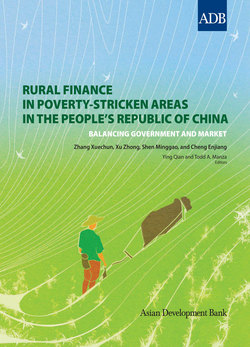Читать книгу Rural Finance in Poverty-Stricken Areas in the People's Republic of China - Xuechun Zhang - Страница 31
На сайте Литреса книга снята с продажи.
Phase 4. Pilot Rural Financial Reform (1996–2002)
ОглавлениеIn response to problems—especially risks—that emerged in rural financial reform during the 1990s, the authorities stepped up their management efforts. Major policy measures included putting rural finance in order and advancing reform. In line with the basic strategy set by the 1997 Central Financial Working Conference, state-owned commercial banks were required to shrink institutions at (and below) county level, and small and medium-sized financial institutions were to be developed to support local economic development. State-owned commercial banks, including the ABC, therefore gradually streamlined their county and subcounty branches.
The comprehensive financial reforms launched in 1996 pushed the ABC to become profit oriented
Since the mid-1990s, the operational environment of rural financial institutions has undergone significant changes. First, many township-owned and state-owned enterprises at and below county level have been privatized, and private small and medium-sized enterprises have thrived. By 2000, the output share of state-owned enterprises declined to below 30% of total enterprise output. Second, the rural labor market and other factor markets, excepting the capital and land markets, have been largely liberalized. Third, development of information technology has enhanced regulation and consumer discipline. Fourth, the legal environment has improved, with strengthened enforcement and an increased supply of valid collateral. Finally, the development of informal credit and the entry of foreign banks have intensified competition in the finance sector.
